Mapping physiological G protein-coupled receptor signaling pathways reveals a role for receptor phosphorylation in airway contraction
- PMID: 27071102
- PMCID: PMC4843461
- DOI: 10.1073/pnas.1521706113
Mapping physiological G protein-coupled receptor signaling pathways reveals a role for receptor phosphorylation in airway contraction
Abstract
G protein-coupled receptors (GPCRs) are known to initiate a plethora of signaling pathways in vitro. However, it is unclear which of these pathways are engaged to mediate physiological responses. Here, we examine the distinct roles of Gq/11-dependent signaling and receptor phosphorylation-dependent signaling in bronchial airway contraction and lung function regulated through the M3-muscarinic acetylcholine receptor (M3-mAChR). By using a genetically engineered mouse expressing a G protein-biased M3-mAChR mutant, we reveal the first evidence, to our knowledge, of a role for M3-mAChR phosphorylation in bronchial smooth muscle contraction in health and in a disease state with relevance to human asthma. Furthermore, this mouse model can be used to distinguish the physiological responses that are regulated by M3-mAChR phosphorylation (which include control of lung function) from those responses that are downstream of G protein signaling. In this way, we present an approach by which to predict the physiological/therapeutic outcome of M3-mAChR-biased ligands with important implications for drug discovery.
Keywords: G protein-coupled receptor; asthma; ligand bias; muscarinic; signaling.
Conflict of interest statement
The authors declare no conflict of interest.
Figures

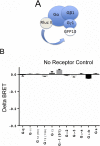


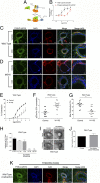
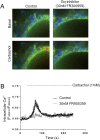


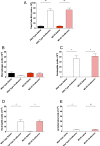
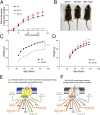
Similar articles
-
Muscarinic M₃ receptors contribute to allergen-induced airway remodeling in mice.Am J Respir Cell Mol Biol. 2014 Apr;50(4):690-8. doi: 10.1165/rcmb.2013-0220OC. Am J Respir Cell Mol Biol. 2014. PMID: 24156289
-
Muscarinic drugs regulate the PKG-II-dependent phosphorylation of M3 muscarinic acetylcholine receptors at plasma membranes from airway smooth muscle.J Recept Signal Transduct Res. 2015;35(4):319-28. doi: 10.3109/10799893.2014.982826. Epub 2015 Jun 8. J Recept Signal Transduct Res. 2015. PMID: 26053513
-
Specificity of g protein-coupled receptor kinase 6-mediated phosphorylation and regulation of single-cell m3 muscarinic acetylcholine receptor signaling.Mol Pharmacol. 2003 Nov;64(5):1059-68. doi: 10.1124/mol.64.5.1059. Mol Pharmacol. 2003. PMID: 14573754
-
Functions of Muscarinic Receptor Subtypes in Gastrointestinal Smooth Muscle: A Review of Studies with Receptor-Knockout Mice.Int J Mol Sci. 2021 Jan 18;22(2):926. doi: 10.3390/ijms22020926. Int J Mol Sci. 2021. PMID: 33477687 Free PMC article. Review.
-
Muscarinic receptors and control of airway smooth muscle.Am J Respir Crit Care Med. 1998 Nov;158(5 Pt 3):S154-60. doi: 10.1164/ajrccm.158.supplement_2.13tac120. Am J Respir Crit Care Med. 1998. PMID: 9817739 Review.
Cited by
-
RGS12 is a novel tumor suppressor in osteosarcoma that inhibits YAP-TEAD1-Ezrin signaling.Oncogene. 2021 Apr;40(14):2553-2566. doi: 10.1038/s41388-020-01599-z. Epub 2021 Mar 8. Oncogene. 2021. PMID: 33686240 Free PMC article.
-
PD 102807 Induces M3 mAChR-Dependent GRK-/Arrestin-Biased Signaling in Airway Smooth Muscle Cells.Am J Respir Cell Mol Biol. 2022 Nov;67(5):550-561. doi: 10.1165/rcmb.2021-0320OC. Am J Respir Cell Mol Biol. 2022. PMID: 35944139 Free PMC article.
-
Effects of Different Photoperiods on Growth Performance, Glucose Metabolism, Acetylcholine, and Its Relative Acetylcholine Receptor Modulation in Broiler Chickens.Animals (Basel). 2024 Oct 17;14(20):3003. doi: 10.3390/ani14203003. Animals (Basel). 2024. PMID: 39457933 Free PMC article.
-
Targeting G protein-coupled receptor kinases (GRKs) to G protein-coupled receptors.Curr Opin Endocr Metab Res. 2021 Feb;16:56-65. doi: 10.1016/j.coemr.2020.09.002. Epub 2020 Sep 18. Curr Opin Endocr Metab Res. 2021. PMID: 33718657 Free PMC article.
-
G protein-biased GPR3 signaling ameliorates amyloid pathology in a preclinical Alzheimer's disease mouse model.Proc Natl Acad Sci U S A. 2022 Oct 4;119(40):e2204828119. doi: 10.1073/pnas.2204828119. Epub 2022 Sep 26. Proc Natl Acad Sci U S A. 2022. PMID: 36161942 Free PMC article.
References
-
- Somlyo AP, Somlyo AV. Ca2+ sensitivity of smooth muscle and nonmuscle myosin II: Modulated by G proteins, kinases, and myosin phosphatase. Physiol Rev. 2003;83(4):1325–1358. - PubMed
-
- Bai Y, Sanderson MJ. Modulation of the Ca2+ sensitivity of airway smooth muscle cells in murine lung slices. Am J Physiol Lung Cell Mol Physiol. 2006;291(2):L208–L221. - PubMed
-
- Liu C, Zuo J, Janssen LJ. Regulation of airway smooth muscle RhoA/ROCK activities by cholinergic and bronchodilator stimuli. Eur Respir J. 2006;28(4):703–711. - PubMed

